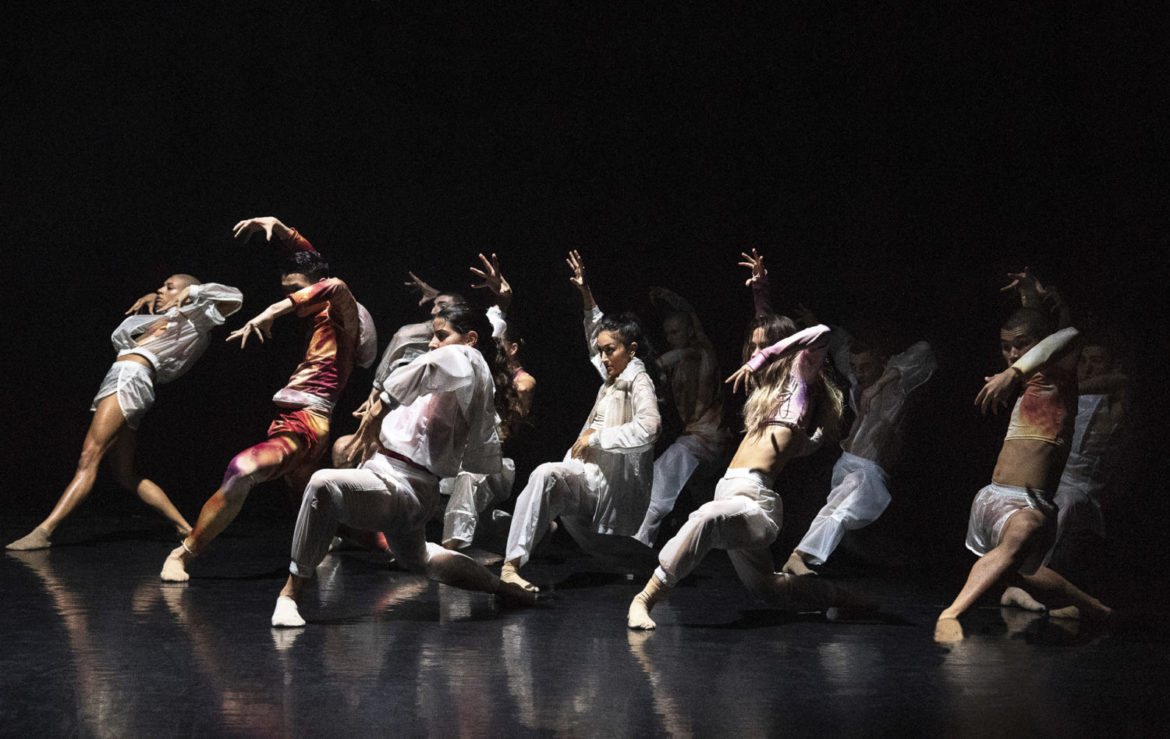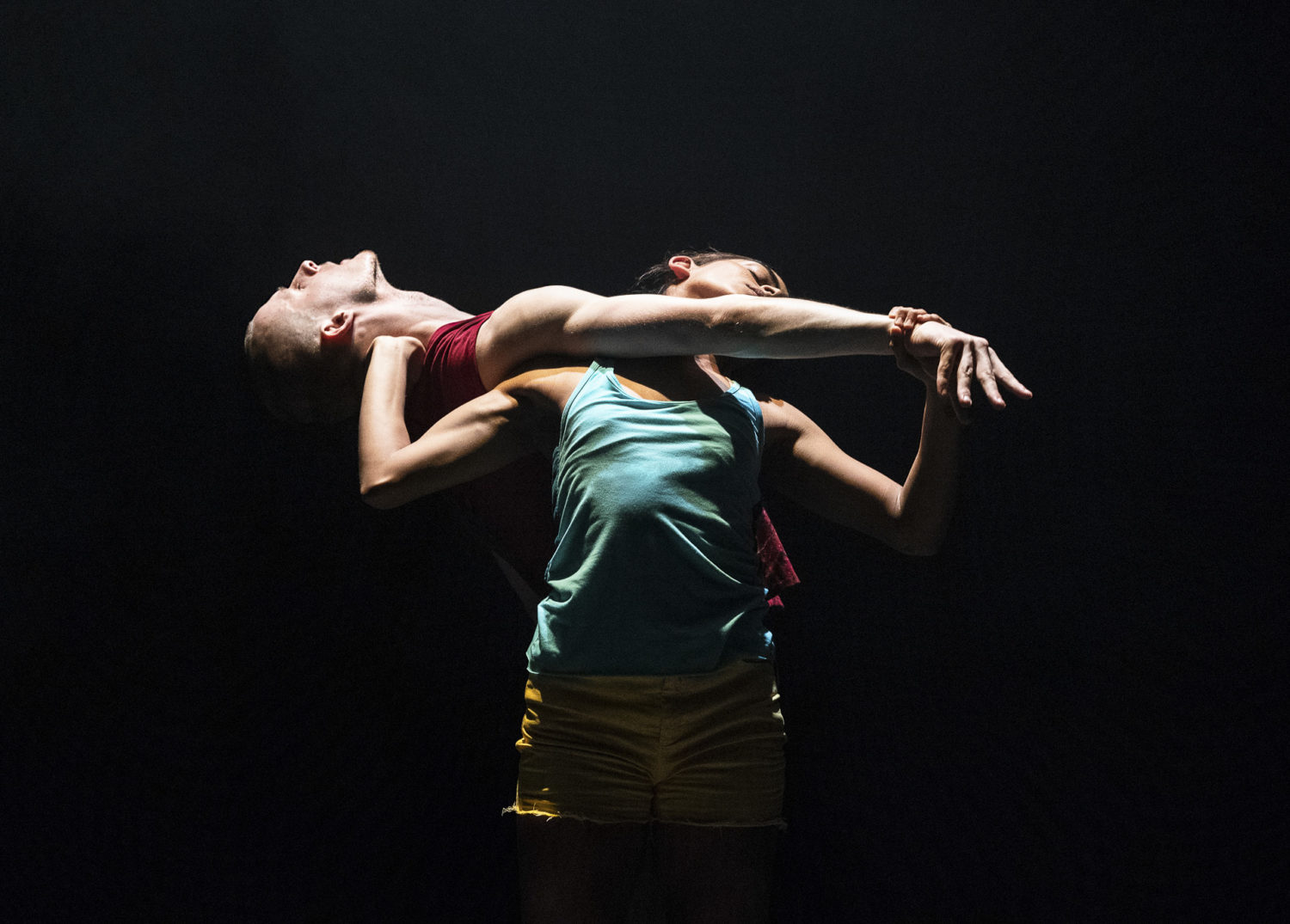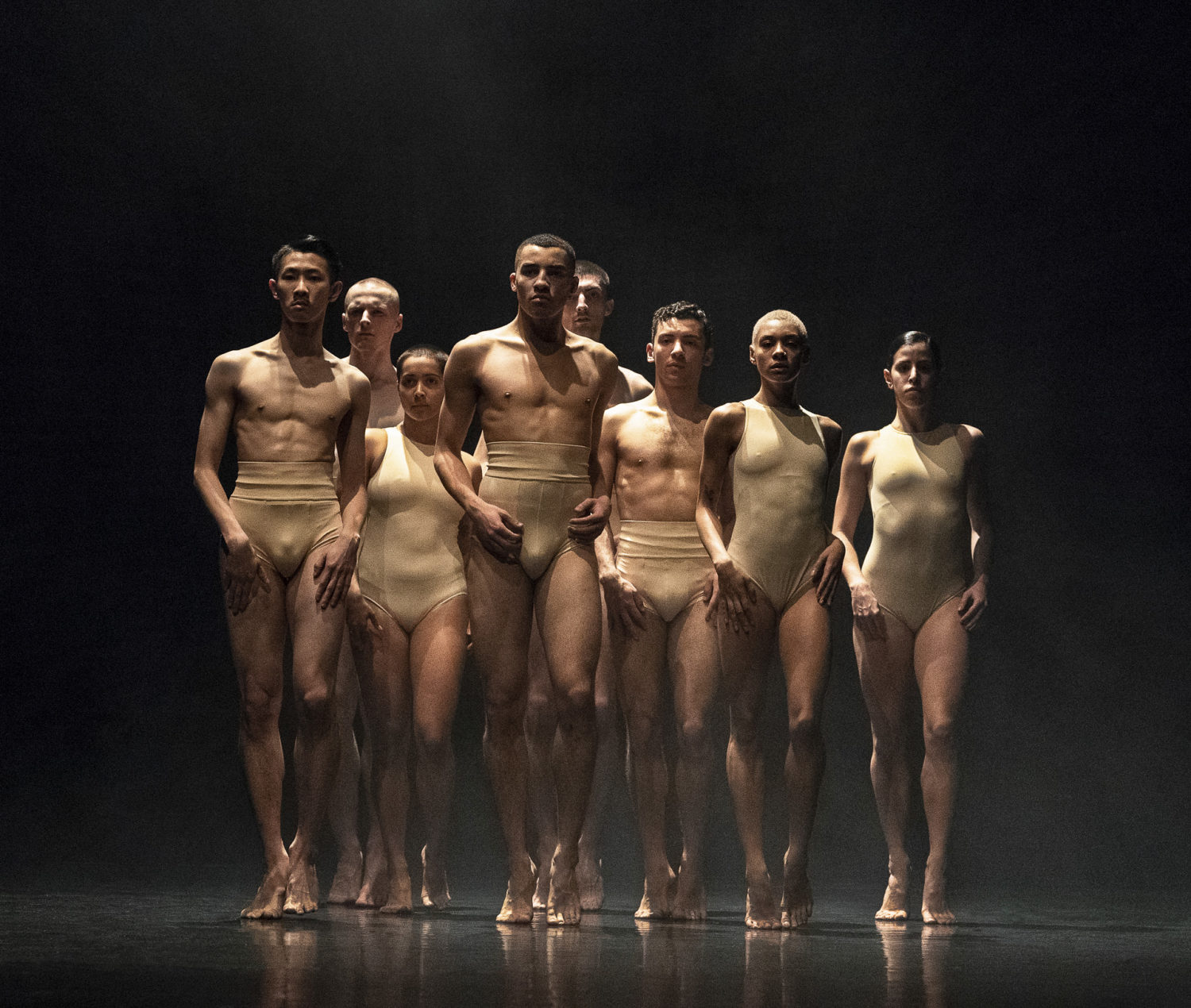One of this year’s much anticipated launches was that of new Rambert2 Company in November. And with a month’s distance from the premiere of its mixed bill (at Sadler’s Wells), the company has been coming into focus, taking its place, having now arrived, after an opening night of sensationalism in dance: gripping energy, spinning motion, sublimated gore, excitement and thrilling tension, with no respite. Beware fragile souls, it leaves scars.
Dance reviews, like all reviews of live shows, of living moving breathing art – the kind which always takes place in a precise delimited space and time, never renewable and only collectively conjured by living memories – are naturally tied, urgently, to the time of the performance.
But a live performance is also measured in terms of how much it succeeds in dispelling the passing of time, how much it steps outside of time and arrests the attention – the attention to detail and the attention to depth and the attention to meaning – of the spectator.
It is a first tribute to Rambert2’s performance that it has been, with some urgency, on my mind over the last month. Dance, real dance, is more than passing entertainment. It must also have long-term effects on the soul.
The performance (on 9 November) included three new works created for the event: Grey Matter by Benoit Swann Pouffer, (also the company’s new Artistic Director), E2 7SD by Rafael Bonachela, and Killer Pig by Sharon Eyal, as also a Rambert old chestnut from 1981, Ghost Dances by Christopher Bruce, one of the pillars of the original Rambert Company.

It is fitting that a new, fresh company should be submitted to the test of what it leaves on the soul. A touch of insolence and a big dose of bravado run through the choice of pieces of Rambert2’s opening show.
The themes coursing through the opening night are worthy of a dystopian 21st venture, in a chasm where youth clashes with death, where life and energy fuse not into hope and love, but into a pounding awe-inspiring horror framed by an inescapable beat. It sounds like an amplified heartbeat and looks like hollowed tortured bodies, deprived from death and stillness and condemned to ever-shaken motion.
The dancers, who are, for some, still fresh from dance school, have a Trainspotting patina about them: some looking the part (a smattering of unisex shaven heads peppers the company, and the colours on set are generally whites pulling on greys, pinks pulling on pasty greens or off-white leotards, which tinge by contrast bare skin in oddly bloodless hues).
In addition to the looks, the dancers deliberately act up the role of raw youths grappling with the bleak premises of adulthood. Skimpy-punkish costumes reveal thin adolescent-like musculatures, which one feels, at times, are yet to grow into something more powerful still. It would be a mistake however, to be indulgent towards fledgling dancers: they can do everything.

It is hard to tell whether the programme is meant to prove their worth or rather catch up with their energy, elasticity and hunger for extremes. For the mixed bill is a showcase of what these new talents in our brave new world can do: impossible extensions, contractions and arcs plied to thundering beats animated by feline speed, with all the jumps and clockwork-lifts a contemporary audience of contemporary dance can expect.
Lucian of Samosata – the first great dance theorist from the 2nd century AD – writes of the dancer that he is more accomplished even than the philosopher, because the dancer speaks his accumulated wisdom through the body – and the body never lies.
Lucian also suggests that the wisdom it took a lifetime to acquire for the philosopher – whose white beard attests to his age and experience – is sublimated into the dancer whose body, young and agile, is yet sculpted by experience as well. There is, in other words, a reversal of time: only youth can be a wise-dancer, only old age can make a philosopher.
Rambert2 dancers exemplify these consequences of youthful wisdom of the body to an extreme point, however: despair, hopelessness, bleakness are the life-lessons they have to give us. Perhaps true, perhaps realistic and depressingly fact-facing. They are an explosive mirror to the sadness of the times.
And yet, one cannot help but yearn for something above our harsh ordinary life. True enough, in the show, there is action, there is energy – the kind that paves the streets of hell – there is gripping breathlessness too. But there is no beauty – the good kind, that is, the beauty that is also charged with high moral aspirations. The message of the show however is that we shouldn’t indulge in that fantasy, but there is no enchantment. And art cannot be an escape from the truth. It is a dance for the age of Brexit, where restless dynamism runs head first against a wall.

In the first piece of the evening, Grey Matter, Pouffer has transposed the eternally choreographic story of one girl against the group, incapable of finding a place within in. But we are no longer in the fresh wild countryside of a Sacre du Printemps. The group-alienation dynamics are now framed in what, to all intents and purposes, is a neural network of cerebral synapses and coded information, in which the dancers (in sterilised, hygienic greys) are the electrons, neutrons and protons animating thought: the ‘grey matter’ of the piece’s title.
The sacrificial girl is prone to hysterics, which punctuate her attempts at fitting in with the group. The group not only rejects her, but is too busy performing its function, shaking in unison to the flow of received commands, intent only on surfing brainwaves.
It is the moments of madness, random, un-ordered movements which make the girl bump against the group, which are also the moments where there is a possibility for a meeting. It is the Epicurean random swerve of an atom, that unexpected declination, which suddenly opens up worlds, new horizons, freedom: the busy stage then suddenly gives way to a stupendous pas-de-deux as lyrical and touching as the rest is steely, inescapable and hopeless. But it is also short-lived.

The rhythm and the rapid transitions certainly captivate the viewer. The theme of the workings of the brain is also as contemporary and urgent as it gets. Dance has a special dialogue to tie with neural mechanisms since it is the art, par excellence, which incarnates both the utter physicality of the body and the supreme command of the mind over the body through the extreme control a dancer exhibits over his or her movements – this is Lucian’s gesture-philosopher after all.
However, Pouffer seems to suggest that inside our brains we are oppressed by the same walls and controlled societal impulses as we are outside our bodies in society. Perhaps he is right. Perhaps the blood that pumps oxygen to the mind, like a deafening metronome, acts like a rigid dictator to the movements of our minds and bodies. Perhaps there is, as so many philosophers over the ages have surmised, no freedom.
The second piece, with its East London postcode title E2 7SD, where boho-gentrification meets council estates, is a pas-de-deux danced not so much to the music of time, but to the music of urban street life – a soundscape which plunges the theatre into a purified city-life which our ears recognise, though we had never paid attention to it before. It is an experience not unlike that of turning off the image in a film, and only listening to the soundtrack: when suddenly the scraping of a chair on the floor, the swish of a coat against a car-door become the protagonists, crucial contributors to the plot.

The juxtaposition of this sonorous map of our lives with a dancing – or should we say, writhing – couple, dressed in colourful but skimpy t-shirts and shorts, underlines the quotidian intimacy of the piece. It has the curious effect of almost blurring the lines of the bodies of the dancers: it is they who accompany the soundscape, not the other way around.
Form is not torn apart from Matter, but rather reason is torn apart from speech and sound. What is abstract but comprehensible is the soundscape; what is concrete yet incomprehensible is the muted dialogue of the bodies.
It is a true Godardian experience. Jean-Luc Godard, the great French film director and image-theorist who has mastered the art of doing dialogues with snippets of trickling sounds (to the extent that his films since the 1980s are deemed brilliant but unwatchable since they negate the very principle of film, namely that it should be watched).
Here too, we have a dance which has managed to cancel out the dance and place sound, paradoxically, at the centre of motion and physical tension. Suddenly, their bodies are not precise enough to get something said with: it is the rest of the world which speaks through its soundscape. But the couple is mute and the two remain incommunicado both between themselves and between them and us.
The result is a dystopian frenzy of attempts at touching, at beating, at penetrating. The impossibility of communication accelerates into violence and tumult, in a maelstrom which threatens to never end.

The third piece of the evening was the Ghost Dances. It is the root work bequeathed to Rambert2 from its mother company Rambert, who created it first. Heavens know why! It is long and repetitive and utterly unimaginative.
Three angels of death softly tip-toe to overly sweet music from south American flute-pipes, and freeze in mid-dance, a series of youthful happy couples. It is touching the first time, bland the second, by the fifth or sixth (I stopped counting) it is positively sickening. However politically significant and well-wishing it may be, commemorating the senseless deaths of innocent lives, dance cannot be a memorial service.
The fourth and last piece Killer Pig by Sharon Eyal is the most impressive, thunderous and alarming. The dancers are dressed in skin-colour costumes and are here to kill or be killed. The contortions are exuberant, baroque in their infinite pliability. Hua Han, a dancer as slim as a reed also behaves like one, and bends, and folds, and sways and stretches as though he is powering the core of the earth. Another figure, feminine but seething with power, Salomé Pressac, jumps and twists and dominates the stage in an echo to her biblical namesake.

The piece is overwhelming and spellbinding and definitely the highlight in terms of the sheer fanaticism of its exploration of the limitless concavities and convexities a body can be plied to. There is violence here too. Relentless, full of unrequited rage, the dancers fling themselves at one another with all the desperation of rebels without a cause. The pig in the title is an ominous presence: is it the pig inside of us? is it a metaphor for life, disgusting as it is? is it the pig we need to sacrifice in order to be free?
There is undoubtedly an accelerated movement towards the slaughter house as the piece moves forward. Limbs are stretched as if torn, entrails are exposed with shakes and twists from the dancers, evoking the wriggling of live organs, which one hopes will release some omens- though of course, there can be no good omen here.
The climax is reached with the revelation of the heart – not the loving heart – but the beating, throbbing, pulsating heart. The music transforms into the sole beat of this bloody and blood-thirsty core of life, and the dancers pace in conscribing circles, moulding their bodies to the infernal beat, which will simply. Never. Stop.
Rambert2 is the junior company to it’s established mother company Rambert. Their new show is on tour throughout the UK until April with dates and locations on the company’s website.


